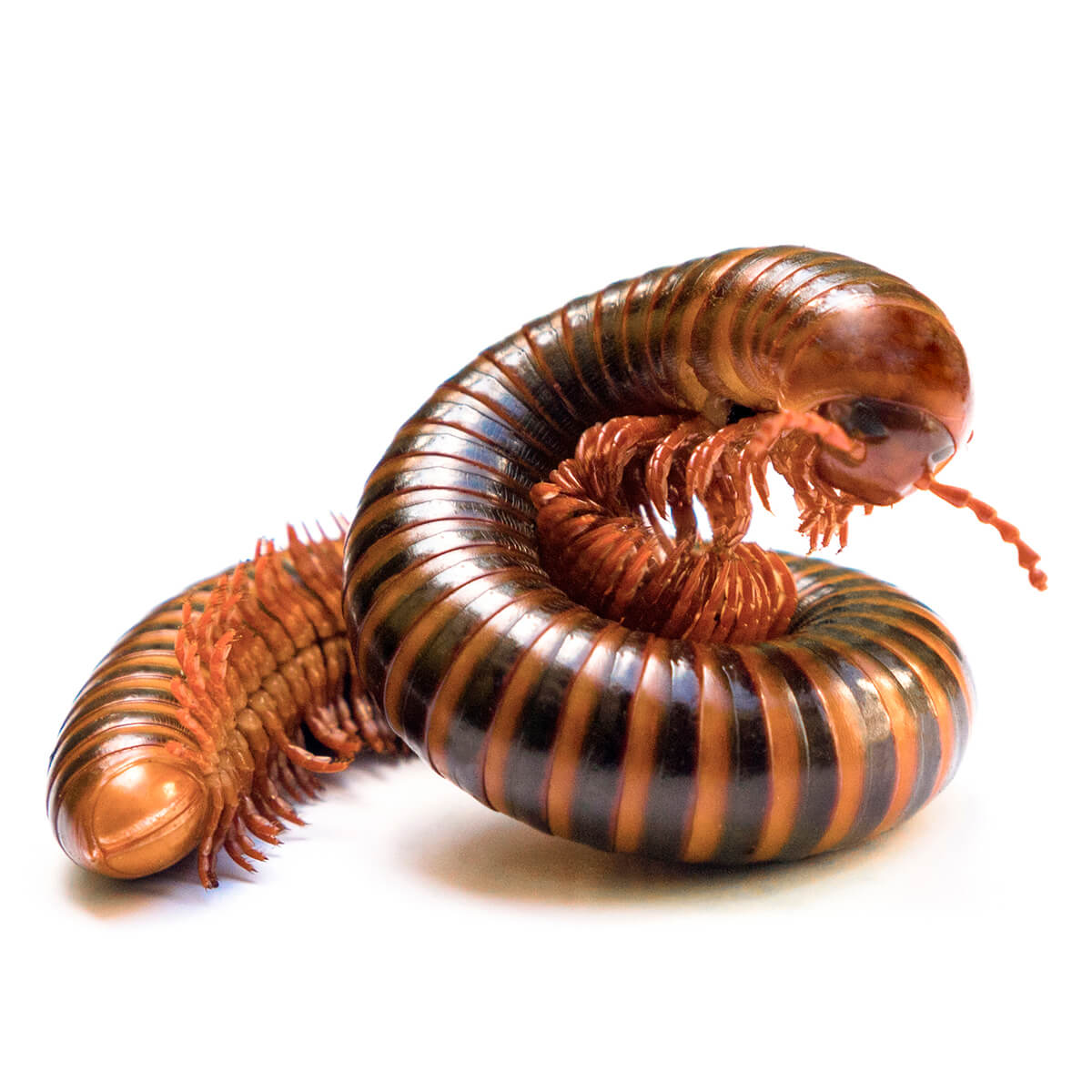Millipedes of Australia
Portuguese millipedes (Ommatoiulus moreletii) differ from their arthropod cousins, the centipedes by size and the number of legs they have.
Most millipedes are slow, and while their name claims they have 1,000 legs, there are no known species to have 1,000 legs. The Illacme plenipes species has the most legs of all millipedes, with around 750 legs.

Anatomical characteristics
Millipedes range in sizes. The smallest millipede is around 0.2 mm (which is tiny), and the largest can reach 35 cm. Their bodies range from having just 11 segments to sporting over a hundred.
From all species of millipedes, all but one have hardened exoskeletons. The head of the millipede is rounded above and flat on the bottom. All species have mandibles.
On their heads, they have a single antenna and a group of sensory organs. The function of these sensory organs is unknown, but they can be found in centipedes as well.
Their bodies differ from species to species being both cylindrical and flat. Only the head and the following segment are legless.
Each segment after the first two bears two pairs of legs rather than one as the centipede. Their legs have seven segments and are attached to the bottom side of their body. Often, males have longer legs than males.
Common millipede species have anywhere from 30 to 400 legs. The Illacme plenipes is the creature with the most legs in the world, sporting 750 legs.
Reproduction and lifecycle of a millipede
Surprisingly, millipedes have quite long lives. The millipedes’ journey begins as an egg. Each female lays anywhere from 10 to 300 eggs, depending on the species. Most species abandon their eggs once they’ve laid them.
It takes three weeks for a young millipede to hatch. As the insect grows, they continuously add new segments to their bodies. Some of these arthropods have reproductive and non-reproductive stages once they become an adult.
Millipedes can live up to 15 years, depending on the species. This makes these arthropods’ lives quite long.
Explore also: The Most Venomous Spiders in Australia
What do millipedes eat
While millipedes can look scary and dangerous, these arthropods mainly feed on organic matter, faeces and decomposing vegetation.
The diet of the millipede makes this arthropod quite important to the decomposition of organic matter and plant litter. These arthropods are especially important to regions where earthworm populations are small.
There are also a few species that are omnivorous and some that feed on meat. Their diet mostly consists of earthworms, snails and other insects.
The home millipede
Living in Australia will make you come face to face with a few millipedes now and then. This arthropod lives mainly in the backyard, so they’ll rarely infest your home.
However, Victoria, Tasmania and South Australia have a common past with millipedes infestations. This infestation occurs when Portuguese millipedes gather in large numbers in your garden bed. Because of the abundance of millipedes, they tend to appear a lot inside your home.
Pest control treatment for millipede
Millipedes are treated with general pest control methods. If you start experiencing problems in your home, we suggest you call a professional to come and inspect your property.
Thankfully, general pest control sprays are strong enough to kill them.
Both insects are very similar. While it’s unlikely to experience a full-scale infestation in your home, if you do, we suggest you contact your local pest controller.
They may not pose a direct danger to you or your home, but no one should share their home with a thousand-legged creature.